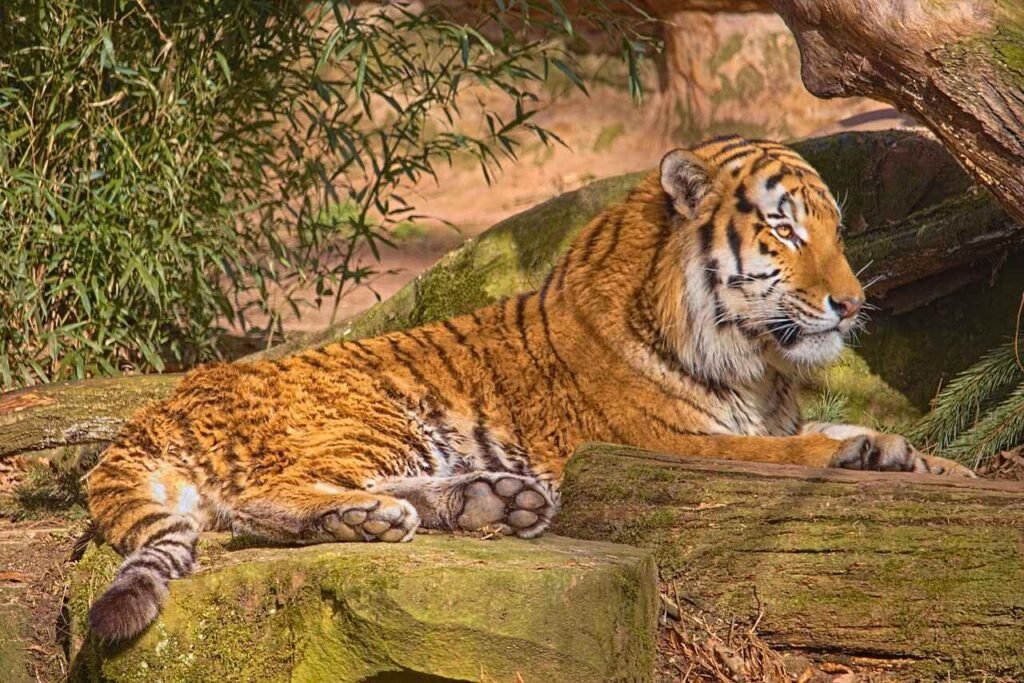Table of Contents
ToggleHow to reach Sundarban from Kolkata
To reach Sundarban from Kolkata, you can follow these steps.
1. Take a Train from kolkata
- Board a local train from Kolkata to Canning. It’s the nearest railhead to the Sundarban.
- From Canning, you can take a bus or taxi to Godkhali Jetty, which is around 25 kilometers away.
2. Reach Godkhali Jetty
- From Kolkata, you can also directly hire a taxi to Godkhali Jetty.
- At Godkhali Jetty, you’ll find several boats and launches that will take you into the Sundarban.
3. Boat Ride to Sundarbans
The boat ride from Godkhali Jetty to Sundarban takes around 2-3 hours, depending on the weather and tidal conditions.
4. Other option, by Bus and Ferry
You can also take a bus from Kolkata to Namkhana, and then a ferry from Namkhana to Sagar Island, which is close to the Sundarban. However, this route may be more time-consuming.
How to reach sundarban by road
To reach Sundarban from Kolkata by road, you need to follow these steps.
1. Drive to Godkhali Jetty
- Start from Kolkata and head towards Diamond Harbour Road.
- Continue on Diamond Harbour Road towards Kakdwip.
- From Kakdwip, drive towards Namkhana.
- Finally, reach Godkhali Jetty, which is the gateway to the Sundarban.
2. Distance and Time
The distance from Kolkata to Godkhali Jetty is approximately 100 kilometers, and it takes around 3-4 hours to reach, depending on traffic conditions.
3. Ferry Service
At Godkhali Jetty, you’ll find ferry services that will take you further into the Sundarban.
4. Check Road Conditions
Some parts of the road may be in poor condition, especially after heavy rains, so it’s advisable to check the road conditions before starting your journey.
5. Alternative Route
Alternatively, you can drive to Namkhana and take a ferry from there to Sagar Island, which is close to the Sundarban. However, this route may be more time-consuming.
How to reach Sundarban by car
You can travel to Sundarban by car, but there are limitations. The Sundarban are primarily accessible by boat due to the region’s unique geography, which is characterized by dense mangrove forests and tidal waterways.
To reach the Sundarban by car, you would typically drive to one of the nearby towns or jetties, such as Godkhali or Namkhana, and then continue your journey by boat. These towns serve as gateways to the Sundarban and have parking facilities for vehicles.
Once you reach the Sundarban, you would explore the area by boat, as many parts of the region are only accessible by water. Boat tours are a popular way to experience the Sundarban and its wildlife, including the famous Bengal tigers.
How to reach Sunderban by train
To reach Sundarban by train, you can follow these routes.
1. Reach Kolkata
Sundarban is located in the South 24 Parganas district of West Bengal, India. The nearest major city is Kolkata. So, first, you need to reach Kolkata.
2. Take a Train to Canning
From Kolkata, you can take a local train to Canning, which is the nearest railhead to Sundarban. There are regular trains from Sealdah station in Kolkata to Canning. The journey takes around 1.5 to 2 hours.
3. From Canning to Godkhal
From Canning, you can take a local bus or hire a taxi to reach Godkhali, which is the gateway to the Sundarban. It is about 45 min to 1 hour journey from Canning to Godkhali.
4. From Godkhali to Sundarban
From Godkhali, you can take a boat or launch to reach the Sundarban. The journey takes around 2 to 3 hours, depending on the exact location in the Sundarban you are heading to.
Know why Sundarban is famous

The Sundarban are famous for several reasons
1. Mangrove Forest
The Sundarban is the largest mangrove forest in the world, known for its unique ecosystem where saltwater from the Bay of Bengal meets freshwater from rivers, creating a diverse habitate.
2. Biodiversity
It is home to a wide variety of flora and fauna, including the Bengal tiger, which is one of the main attractions. Other wildlife includes crocodiles, various bird species, spotted deer, and more.
3. UNESCO World Heritage Site
The Sundarban is a UNESCO World Heritage Site, recognized for its ecological significance and unique natural beauty.
4. Tiger Reserve
It is also a tiger reserve and a biosphere reserve, aimed at protecting the rich biodiversity of the region, particularly the endangered Bengal tiger.
5. Boat Tours
Visitors can explore the Sundarban through boat tours, which offer a chance to see the wildlife and experience the beauty of the mangrove forest up close.
6. Rich Cultural Heritage
The Sundarban region is also rich in cultural heritage, with traditional practices and lifestyles of the local communities that have adapted to the unique environment of the mangrove forest.
Overall, the Sundarban are famous for their natural beauty, biodiversity, and ecological importance, making them a popular destination for nature lovers and wildlife enthusiasts.
Visiting places in Sundarban

Visiting the Sundarbans offers a range of unique experiences, from exploring its diverse wildlife to experiencing the local culture. Here are some popular places and activities to consider during your visit.
1. Sundarbans National Park
This UNESCO World Heritage Site is home to a variety of wildlife, including the Bengal tiger, saltwater crocodile, and numerous bird species. Explore the park through boat cruises and guided tours to spot wildlife and enjoy the beauty of the mangrove forests.
2. Sajnekhali Wildlife Sanctuary
Located in the Sundarbans, this sanctuary is known for its rich biodiversity. Visit the watchtower for stunning views of the area and spot wildlife such as deer, crocodiles, and birds.
3. Netidhopani
This area is known for its ancient ruins, including a 400-year-old temple dedicated to Goddess Bonbibi, revered by the locals and fishermen of the region.
4. Jambu Dweep
This island is known for its pristine beaches and tranquil surroundings, offering a peaceful retreat amidst nature.
5. Gosaba
Visit this historic town, which is the largest inhabited island in the Sundarbans. Explore the local market, visit the historic Hamilton House, and learn about the culture and lifestyle of the people living in the Sundarbans.
6. Bird Watching
The Sundarbans is a haven for birdwatchers, with numerous species of birds found in the region. Keep an eye out for kingfishers, herons, egrets, and the elusive masked finfoot.
7. Boat Cruises
Explore the intricate waterways of the Sundarbans on a boat cruise. This is a great way to experience the beauty of the mangrove forests and spot wildlife along the way.
8. Cultural Programs
Experience the local culture of the Sundarbans through traditional music and dance performances organized by local communities.
Know about Sundarban biosphere reserve
The Sundarban Biosphere Reserve is located in the state of West Bengal, India, and also extends into Bangladesh. It covers a large area of the Sundarbans mangrove forest, including the Indian Sundarbans and the Bangladesh Sundarbans. The Indian Sundarbans are situated in the southern part of West Bengal, along the coast of the Bay of Bengal, and are part of the larger Sundarbans region that spans both India and Bangladesh.
Formation of the Sundarban Delta
The Sundarbans delta is formed by the confluence of several rivers, including
1. Ganga
The Ganges River, one of the major rivers of the Indian subcontinent, flows through India and Bangladesh and is a significant contributor to the formation of the Sundarbans delta.
2. Brahmaputra
The Brahmaputra River, originating in Tibet and flowing through India and Bangladesh, also contributes to the formation of the Sundarbans delta.
3. Meghna
The Meghna River, which is a major river in Bangladesh, merges with the Ganges and Brahmaputra rivers before flowing into the Bay of Bengal, forming part of the Sundarbans delta.
These rivers, along with their tributaries, bring freshwater and sediment into the Sundarbans region, creating a dynamic ecosystem that is influenced by both freshwater and tidal processes.
Tigers in Sundarban Delta
The Sundarbans, which span both India and Bangladesh, are estimated to be home to around 200-250 Bengal tigers. These tigers are well-adapted to the mangrove habitat and are known for their ability to swim and hunt in the water. However, due to the dense and challenging terrain of the Sundarbans, it can be difficult to accurately count the tiger population, and estimates can vary.
Best time to visit sunderbans
The best time to visit the Sunderbans, a mangrove forest in India and Bangladesh, is during the winter months from December to February. During this time, the weather is pleasant with temperatures ranging from 15°C to 25°C (59°F to 77°F), making it ideal for exploring the tigers and natural beauty. The summer months (March to May) are hot and humid, while the monsoon season (June to September) brings heavy rainfall and the risk of cyclones, making travel less favorable.
Sundari tree in sundarban
The Sundarbans mangrove forest is named after the Sundari tree (Heritiera fomes), which is one of the dominant tree species found in the region. The Sundari tree is known for its distinctive stilt roots, which help it to survive in the saline and swampy conditions of the mangrove ecosystem.
The Sundari tree is highly valued for its timber, which is used in construction and boat-building. However, overexploitation and habitat loss have led to a decline in the population of Sundari trees in the Sundarbans.
Distance Between
kolkata to sundarban distance
The distance from Kolkata to the Sundarbans can vary depending on which part of the Sundarbans you’re traveling to. The most common entry point for tourists visiting the Indian side of the Sundarbans is through the Basanti area, which is approximately 100 kilometers from Kolkata.
Canning to sundarban distance
The distance from Canning to Gosaba is approximately 20 kilometers by waterway, and the boat journey can take around 1-2 hours, depending on the type of boat and the tide.
Howrah to Sundarban distance
- To reach the Sundarbans from Howrah, you would typically travel by road to the nearest entry point, such as Canning or Sonakhali, and then continue by boat into the mangrove forest.
- The distance from Howrah to Canning is approximately 50 kilometers by road, and the journey can take around 2-3 hours.
- From Sonakhali, which is another common entry point to the Sundarbans, the distance is approximately 80 kilometers by road, and the journey can take around 3-4 hours.
People aslo ask
1. Is 1 day enough for Sundarban
While it is possible to visit the Sunderbans in one day, it may not be enough time to fully experience this unique and vast mangrove ecosystem. The Sunderbans is a UNESCO World Heritage Site and a biodiverse region with rich flora and fauna, including the famous Bengal tiger.
However, to truly appreciate the beauty and wildlife of the Sunderbans, consider staying for at least two to three days.
2.Trip cost to Sundarban
1. Day Trip
Day trips from Kolkata to the Sunderbans can cost anywhere from ₹1,500 to ₹3,000 per person, including boat ride, meals, and guide fees. This usually does not include transportation to and from Kolkata.
2. 2-3 Day Tour
A 2-3 day tour package can cost anywhere from ₹5,000 to ₹15,000 per person, including accommodation, meals, boat rides, and guide fees. The cost can vary based on the quality of accommodation and amenities provided.
3. Luxury Tours
Luxury tours with premium accommodation and amenities can cost upwards of ₹20,000 per person for a 2-3 day trip.
3. comparision between Digha or Sundarban
Choosing between Digha and the Sundarbans depends on your preferences and the type of experience you’re looking for.
1. Digha
Beaches
Digha is primarily known for its beach, making it a popular destination for a relaxing seaside vacation.
Accessibility
Digha is more easily accessible from Kolkata and other parts of West Bengal, making it a convenient choice for a short trip.
Activities
It’s advisable to check with different tour operators and compare prices and services to get the best deal. Additionally, if you’re traveling during peak tourist season or booking last minute, prices may be higher.
2. Sundarban
Unique Ecosystem
The Sundarban is a UNESCO World Heritage Site and the largest mangrove forest and known for its unique biodiversity Bengal tiger.
Wildlife and Nature
The Sundarban offers opportunities for wildlife spotting, birdwatching, and exploring the mangrove forests, which is adventurous.
Boat Cruises
A trip to the Sundarbans typically includes boat cruises through the mangrove forests, offering a chance to immerse yourself in the natural beauty of the region.
If you’re looking for a beach vacation with water sports and a lively atmosphere, Digha might be the better choice. However, if you’re interested in nature, wildlife, and a more adventurous experience, the Sundarbans would be the ideal destination.
4. Bus fare from Kolkata to Sundarban
Generally, the bus fare for a one-way trip from Kolkata to destinations like Basanti (a common entry point to the Sundarbans) can range from ₹150 to ₹300 per person. These fares are for non-AC buses.
For AC buses or deluxe coaches, the fare can be higher, ranging from ₹300 to ₹600 or more per person for a one-way trip.
5. Route map to reach from Kolkata to Sundarban
- Kolkata to Canning
- Canning to Gosaba
- Gosaba to Sundarbans
6. Chances of seeing a tiger in Sundarban
The chances of seeing a tiger in the Sundarbans, especially the Bengal tiger, can be quite challenging. The Sundarbans is a vast mangrove forest with thick vegetation and intricate waterways, making it a natural habitat for tigers but also providing them with plenty of cover.
7. Sundarban nearest railway station
The nearest railway station to the Sundarbans is Canning Railway Station, which is located in the town of Canning in West Bengal, India. Canning serves as a gateway to the Sundarbans, and from here, you can travel to various parts of the Sundarbans by road and boat.
Canning Railway Station is well-connected to Kolkata and other major cities in West Bengal by train. From Canning, you can take a local bus or taxi to reach the entry points to the Sundarbans, such as Gosaba or Sonakhali, from where you can continue your journey into the mangrove forests by boat.




